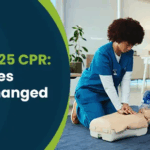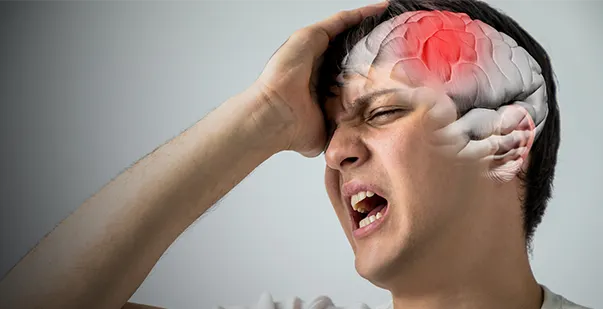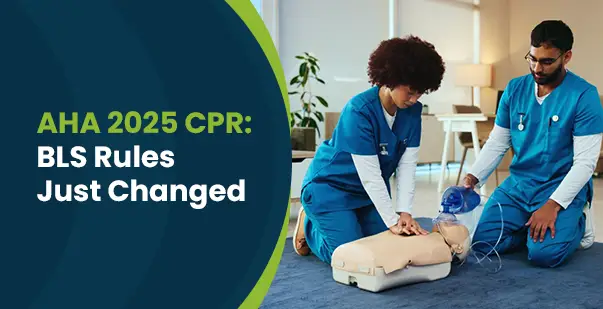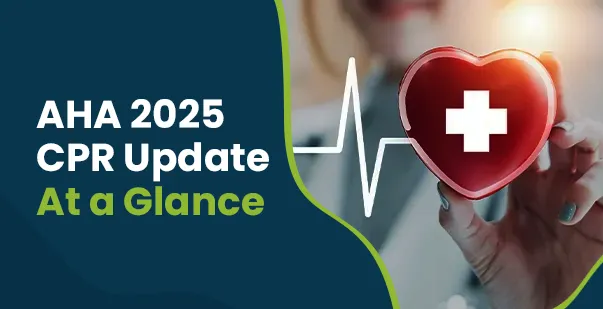When someone experiences a hit to the head, their brain may bump against the skull, affecting brain function temporarily. This can lead to symptoms like confusion, dizziness, and even memory loss. Although symptoms usually resolve, a concussion requires careful treatment to prevent complications. It is estimated that 69 million (95% CI 64-74 million) people worldwide suffer a traumatic brain injury (TBI) or concussion annually.
Concussions are a common yet often overlooked injury that can occur in sports, daily activities, or unexpected accidents. Thus, knowing first aid is essential in sports, daily life, and accidents, as injuries can happen unexpectedly. It can be a collision on the field, a fall at home, or a mishap on the road, head injuries can happen to anyone, anytime. Knowing first aid for concussions becomes important, as timely action can minimize complications and support recovery.
Read on to learn how to treat a concussion, how you can respond effectively, and provide the care needed to support a safe recovery.
Warning Signs and Symptoms of a Concussion
A concussion occurs when your brain suddenly shifts inside the skull. This rapid movement disrupts normal brain function. While usually temporary, proper identification and care are crucial for recovery. Moreover, quick recognition of concussion symptoms can prevent serious complications. Here’s what to watch for:
- Headache and Cranial Pressure
Head trauma often triggers inflammatory responses and changes in blood flow, leading to headaches that range from mild discomfort to severe, throbbing pain. The accompanying sensation of pressure may feel like a tight band around the head, and symptoms can worsen with physical or mental exertion. Moreover, severe or progressively worsening headaches could indicate a more serious condition, such as a brain bleed. If such symptoms occur, immediate medical attention is recommended.
- Confusion or Memory Problems
The impact disrupts neural pathways responsible for cognitive processing, leading to symptoms like difficulty remembering recent events or concentrating on tasks. Many patients also report feeling “spaced out” or struggling to follow conversations. In mild cases, these symptoms typically resolve within a few days to weeks as the brain heals. However, recovery time can vary depending on the individual and the severity of the injury.
- Dizziness or Balance Issues
Your brain’s vestibular system becomes temporarily impaired after an impact, affecting spatial orientation and equilibrium control. This can lead to spinning sensations or unsteadiness while walking, with quick head movements often intensifying these symptoms. During medical evaluations, doctors assess balance issues using specific tests, such as the Romberg Test, which helps detect abnormalities in coordination and balance. The assessments provide valuable insights into the extent of vestibular dysfunction.
- Nausea or Vomiting
The trauma can affect the brain’s vomiting center, causing nausea and episodes of vomiting. These symptoms often appear within a few hours of the injury and may worsen with movement or changes in position. However, repeated vomiting is a warning sign of a more serious injury, such as increased pressure inside the skull, and requires immediate medical care.
- Sensitivity To Light Or Noise
Due to a concussion, your brain’s ability to filter sensory input becomes compromised. Normal lights may seem painfully bright, a condition known as photophobia (light sensitivity), and regular sounds can feel overwhelming. Additionally, some people may experience diplopia, or double vision, as part of this sensory disruption. These symptoms reflect the impaired neural processing of environmental stimuli following the injury.
- Vision Disturbances
The impact can affect areas of the brain that control eye movement and focus, leading to symptoms like double vision or blurry sight. Your eyes may also struggle to track moving objects, and tasks such as reading or using a screen may become difficult. These vision-related issues may require an eye examination or a neuro-ophthalmologic evaluation to assess the extent of the impairment and guide appropriate treatment.
- Fatigue or Drowsiness
The injured brain requires extra energy for basic functions. This leads to persistent tiredness and mental exhaustion. Therefore, concussions can make simple tasks feel overwhelming. Additionally, sleep patterns become irregular for many individuals.
- Temporary Loss Of Consciousness
In some cases, brief blackouts may occur at the moment of impact. Some people also experience confusion upon waking and memory gaps about the injury. Even a brief loss of consciousness is a sign of a more serious concussion and should prompt immediate medical evaluation. Always take concussion symptoms seriously. If any of these signs of concussion are present, follow the first aid steps below and seek medical help without delay.
10 Steps to Follow When Someone Has a Concussion
Once you know what a concussion is, you need to understand the basic first-aid steps to be taken, as any individual can experience a traumatic brain injury at any time. Hence, when you encounter an emergency-related concussion, follow the steps explained below:
Step 1: Ensure Safety
Before helping someone with a concussion, ensure the area is safe for both you and the injured person. Assess your own safety first before approaching. Only move the person if it’s absolutely necessary, such as if they are in a dangerous location. This is important because moving the person improperly can worsen any potential neck or spinal injuries.
Step 2: Keep the Person Calm and Still
Encourage the person to sit or lie down calmly. Avoid sudden movements or letting them walk around, as this could increase dizziness or risk of further injury. Staying still helps reduce strain on the brain and body, which may reduce symptoms.
Step 3: Check Responsiveness and Breathing
Ensure the person is awake, alert, and breathing normally. If they are unconscious or unresponsive, check for breathing by observing chest movements or feeling for breath near their nose and mouth. If they are not breathing normally at all, begin CPR and call for emergency medical help immediately. If they are breathing but remain unconscious, position them on their side in the recovery position to prevent choking in case of vomiting.
Step 4: Monitor Symptoms
Observe the person closely to note any changes in symptoms. If symptoms worsen, such as increased confusion, severe headache, or vomiting, seek immediate medical help. These can be signs of a more severe brain injury.
Step 5: Avoid Food, Drink, and Medication
Do not give food, drinks, or medication unless a doctor advises it. Eating or drinking can worsen nausea and vomiting, which are common after a concussion. Avoid medications, including over-the-counter pain relievers, unless prescribed by a healthcare professional. Some medications, such as aspirin, can be particularly dangerous because they increase the risk of bleeding. In cases of head injury, where there may be internal bleeding or swelling in the brain, medications like aspirin can worsen these conditions by thinning the blood and making it harder to stop any bleeding.
Step 6: Keep the Person Awake and Aware
For the first few hours, encourage the person to stay awake and alert. This helps you monitor symptoms of a concussion and check if they worsen. Try to keep them engaged in conversation, asking simple questions like, “What day is it?” or “Where are you?” This enables you to assess their memory and level of alertness.
Step 7: Apply Ice to Reduce Swelling
If there is a bump or bruise on the head, applying ice can reduce swelling and pain. However, ice applied directly to the skin can result in frostbite. Thus, wrap ice in a cloth or towel and gently place it on the injury. Apply ice for 15 to 20 minutes every hour.
Step 8: Avoid Physical and Mental Activity
After a concussion, both the brain and body need time to rest. Physical activity can strain the body, while mental activities like reading or using electronic devices can strain the brain. Encourage the person to avoid activities such as sports or exercises, video games or screen time, and school or work assignments. While rest is important, “complete rest” does not mean prolonged inactivity. After the initial 24-48 hours, a gradual reintroduction of light cognitive activities is recommended to support recovery without overloading the brain.
Step 9: Seek Medical Help
Even if the symptoms seem mild, it is important to seek medical advice after a concussion. A doctor can assess the injury and decide if further concussion tests, like a CT scan, are necessary. Some concussions may have delayed symptoms, so it’s wise to have a professional evaluation.
Step 10: Follow Up with Rest and Recovery Guidelines
Most doctors recommend rest as the primary concussion treatment. Key recovery guidelines include avoiding physical activities, school, or work until cleared by a doctor, ensuring adequate sleep to support brain healing, and gradually reintroducing physical and mental activities only when symptoms no longer appear during rest.
Also read: How to Manage Stress – Understanding the Root Causes
When to Seek Emergency Help
Some concussion symptoms may require immediate medical care according to concussion protocols. If the person shows any of the following signs, seek emergency help as soon as possible to prevent serious complications:
- A seizure: This may indicate a more severe brain injury.
- Cannot be woken up: Difficulty waking up can be a sign of significant brain injury or swelling.
- Numbness or limb weakness: This could suggest brain or spinal cord damage affecting motor functions.
- Repeated vomiting: This may indicate increased intracranial pressure, a serious condition that requires immediate intervention.
- Unusual behavior or personality changes: These symptoms can reflect significant brain disruption that needs medical evaluation.
- Difficulty speaking or walking: Difficulty with speech or movement may point to a neurological issue, signaling a more serious concussion or brain injury.
Avoiding Common Mistakes in Concussion First Aid
Quick actions in concussion care can significantly impact recovery outcomes. However, first-aid mistakes can worsen the injury or delay healing. Learn these crucial don’ts to ensure safe, effective care.
- Do not shake the person to wake them up. Gentle verbal encouragement is enough.
- Do not move them unnecessarily, as this can worsen the injury.
- Do not give painkillers without a doctor’s recommendation. Painkillers can mask symptoms and increase bleeding risks.
- Do not let them sleep immediately if you cannot observe their symptoms. Staying awake helps monitor the injury.
Smart Prevention Strategies for Concussion
Preventing concussions requires active safety measures and awareness. Proper equipment and environmental modifications significantly reduce injury risks. Everyone should know basic prevention techniques.
- Wear Protective Gear: Always use helmets or headgear during sports, biking, or any high-risk activities.
- Maintain Safe Environments: Prevent falls by keeping floors clear, using handrails, and ensuring proper lighting in all areas.
- Use Seatbelts: Use seatbelts to lower the chance of suffering a brain injury in an accident.
- Educate on Concussion Symptoms: Learn about concussion symptoms and teach children, athletes, and others to recognize them.
Additionally, avoid using hot packs on head injuries, as they can worsen swelling. Never consume alcohol during recovery, as it can interfere with the brain’s healing process and increase the risk of further injury.
Recovery and Long-Term Care
So, how long a concussion lasts? Most concussions heal within 7-14 days with proper care. However, the actual recovery time varies based on injury severity. Follow these aftercare tips for a smooth recovery:
- Resting the Brain: Avoid screen time, reading, and other activities that require concentration. Giving the brain time to rest is essential for healing.
- Gradual Return to Activities: Start with light activities, such as short walks or brief periods of reading. Slowly increase activity levels as symptoms improve, ensuring you don’t push yourself too quickly.
- Avoid Alcohol and Caffeine: These substances can worsen symptoms or delay recovery. It’s important to avoid them during the healing process.
- Track Symptoms: Keep a journal to note recurring symptoms like headaches, dizziness, or fatigue. Share this information with your healthcare provider for better guidance on your recovery.
In some cases, symptoms may persist beyond the typical recovery period, leading to a condition called post-concussion syndrome (PCS). PCS can cause ongoing issues such as headaches, dizziness, and difficulty concentrating for weeks or months after the injury. If symptoms continue, it is recommended to consult with a healthcare provider for further evaluation and a tailored recovery plan.
Supporting Concussion Recovery with Care!
Caring for a concussion goes beyond just first aid, it’s about patience and understanding. Your calm presence, gentle support, and careful monitoring can make a real difference in someone’s recovery.
Though symptoms may be invisible, your actions have a big impact. Encourage rest, stay vigilant for changes, and don’t rush the healing process. Being there fully and knowing how to treat a concussion can help them recover safely, turning a tough experience into one marked by care and gradual, steady healing.
Frequently Asked Questions (FAQs)
- What to do immediately after a concussion?
If someone experiences a concussion, ensure they are safe and move them only if necessary. Keep them calm and still. Monitor for symptoms like confusion, dizziness, or nausea. Apply ice to any visible bumps and avoid letting them sleep or eat until medical help arrives. Quickly call for medical help, even for mild symptoms.
- What to do with a minor concussion?
Even with a minor concussion, rest is crucial. Keep the person awake and avoid physical or mental strain for the first 24-48 hours. Watch for any changes in their condition, and seek medical advice to rule out any serious injury.
- How long after hitting your head are you safe?
Concussion symptoms can appear immediately or within hours after the injury. People should monitor for symptoms for at least 24-48 hours after the impact, even if they feel fine at first. If symptoms appear later, it’s important to seek medical advice.
- What not to do with a concussion?
Do not let the person sleep immediately after the injury. Do not give food, drinks, or painkillers unless advised by a doctor. Do not allow them to resume physical activity or return to sports until cleared by a healthcare professional. Do not move them unnecessarily if they are injured.
- How long after hitting the head can concussion symptoms start?
Concussion symptoms can develop immediately, but sometimes, they can appear several hours after the injury. It’s important to monitor the person for any changes in their condition during the first 24-48 hours. If symptoms appear late, seek medical help immediately.









